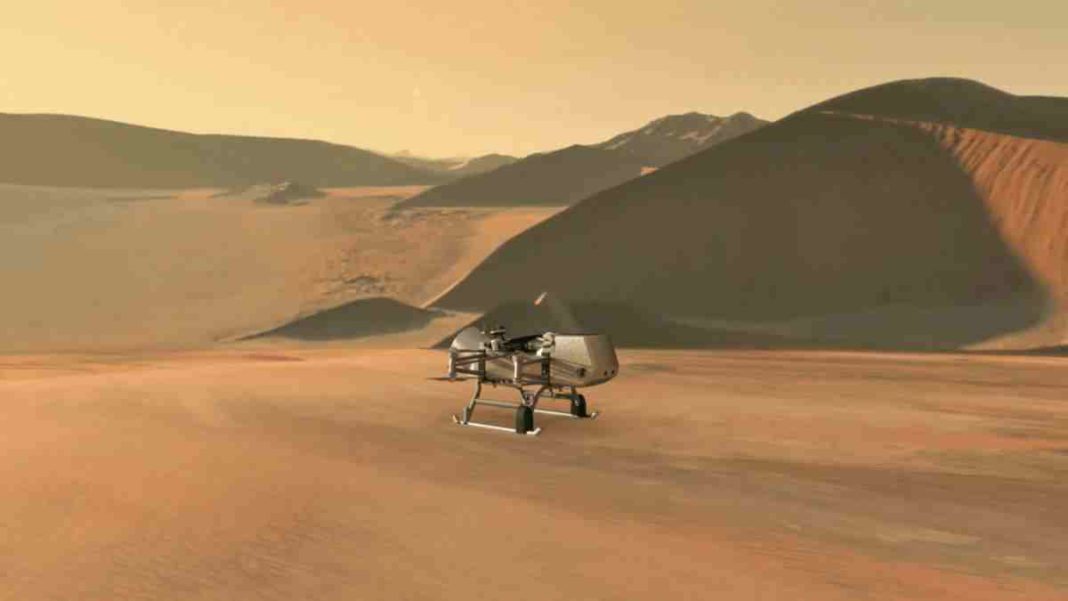UNITED STATES: NASA is developing a nuclear-powered lander, Dragonfly, to explore Titan, Saturn’s largest moon. This mission aims to investigate Titan’s unique atmosphere, low gravity, and complex chemistry, offering insights into potential life precursors.
Dragonfly, a car-sized drone, will be equipped with cameras, sensors, and samplers to explore areas on Titan rich in organic materials that may have had contact with liquid water beneath the icy surface.
An essential feature of Dragonfly is its four pairs of coaxial rotors, crucial for navigating Titan’s nitrogen-rich atmosphere. To prepare for this challenging environment, NASA engineers conducted rigorous testing at NASA’s Langley Research Center in Virginia.
The testing included two campaigns in the Subsonic Tunnel and two in the Transonic Dynamics Tunnel. These tests validated aerodynamic stability and rotor performance under simulated Titan conditions, supporting Dragonfly’s future missions.
Ken Hibbard, Dragonfly’s mission systems engineer at APL, stated, “These tests enhance our simulation models and performance predictions.” The goal is to ensure Dragonfly operates seamlessly when it embarks on its Titan journey.
During their latest visit to NASA Langley, the team tested Dragonfly’s descent, powered flight transition, and forward flight on Titan’s surface. These tests yielded data to boost confidence in simulation models on Earth.
Data from these tests are now being analyzed by APL engineers in collaboration with mission flight team partners, refining technical models and rotor performance predictions.
Rick Heisler, Dragonfly’s wind tunnel test lead from APL, highlighted the importance of tests in the Transonic Dynamics Tunnel. “The data we acquire validates predictions of the lander’s aerodynamics and rotor performance in Titan’s harsh environment,” he said.
Dragonfly, part of NASA’s New Frontiers Program, is tentatively set to launch in 2027, arriving on Titan in the mid-2030s. Principal Investigator Elizabeth Turtle of APL leads a diverse mission team with global contributions.
As Dragonfly’s testing and preparations progress, it brings us closer to the day when this revolutionary rotorcraft will explore Titan, potentially uncovering the moon’s mysteries and transforming science fiction into reality.
Also Read: NASA Engineers Perform Remote Surgery on Voyager Probes, Extending Their Interstellar Mission



